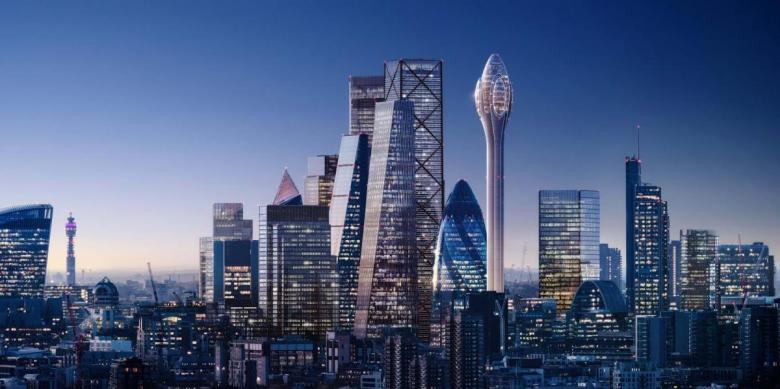The Tulip Is Dead
Visualization: Foster + Partners
One month after reports indicated Norman Foster's Tulip tower planned for the City of London was "likely to happen," the 305-meter-tall tower has been rejected over its "unsustainable concept" and its visual impact on heritage buildings.
The news, as reported today by The Architects' Journal, says that "housing minister Christopher Pincher [decided] to follow the recommendation of planning inspector David Nicholson," whose public inquiry that opened in November 2020 "concluded the scheme should be rejected."
The 210-page report, made public today as a PDF, asserts that, "even with the enormous lengths to which [Foster + Partners] have gone to make the construction and operation of the scheme as environmentally responsible as possible, [...] the extensive measures that would be taken to minimize carbon emissions during construction would not outweigh the highly unsustainable concept of using vast quantities of reinforced concrete for the foundations and lift shaft to transport visitors to as high a level as possible to enjoy a view."
Looking from the Tulip toward the Shard. (Visualization: Foster + Partners)
Unveiled in November 2018 for a site next to Foster's earlier 30 St. Mary Axe, the taller Tulip was intended to do just that: shuttle visitors to the viewing gallery, restaurant, and gondola ride at the bulbous top of the tower, at heights on par with The Shard south of the Thames. Although an educational facility was thrown into the Tulip's mix, this element came across as a concession to gain planning approval rather than as an integral component of the "cultural attraction." That approval was gained in April 2019, but the victory was short-lived, as London mayor Sadiq Khan rejected the project in July of that year, saying it "would result in harm to London’s skyline."
Foster's client, the J. Safra Group, appealed in January 2020, which led to the planning inquiry. Delayed from June to November of that year, the outcome of that inquiry is now public, with much of it reinforcing the concerns of Khan back in 2019. While the report praises the "honed detailing and exquisite presentation" of the project, it states that "the chosen purpose, form, materials and location have resulted in a design that would cause considerable harm to the significance of the [Tower of London], and further harm to other designated heritage assets."
The quotes above that were taken from the report indicate, to this writer at least, that if Foster's Tulip was proposed in a similarly striking form, but as an office building serving residents rather than as an entertainment venue "transport[ing] visitors to as high a level as possible to enjoy a view," its approval would have been more likely. But as supertall towers in other global cities are being topped with indoor and outdoor viewing galleries and "thrill experiences," it might just be a matter of time before London gains the Tulip's "cultural attractions" on a different architectural body.

